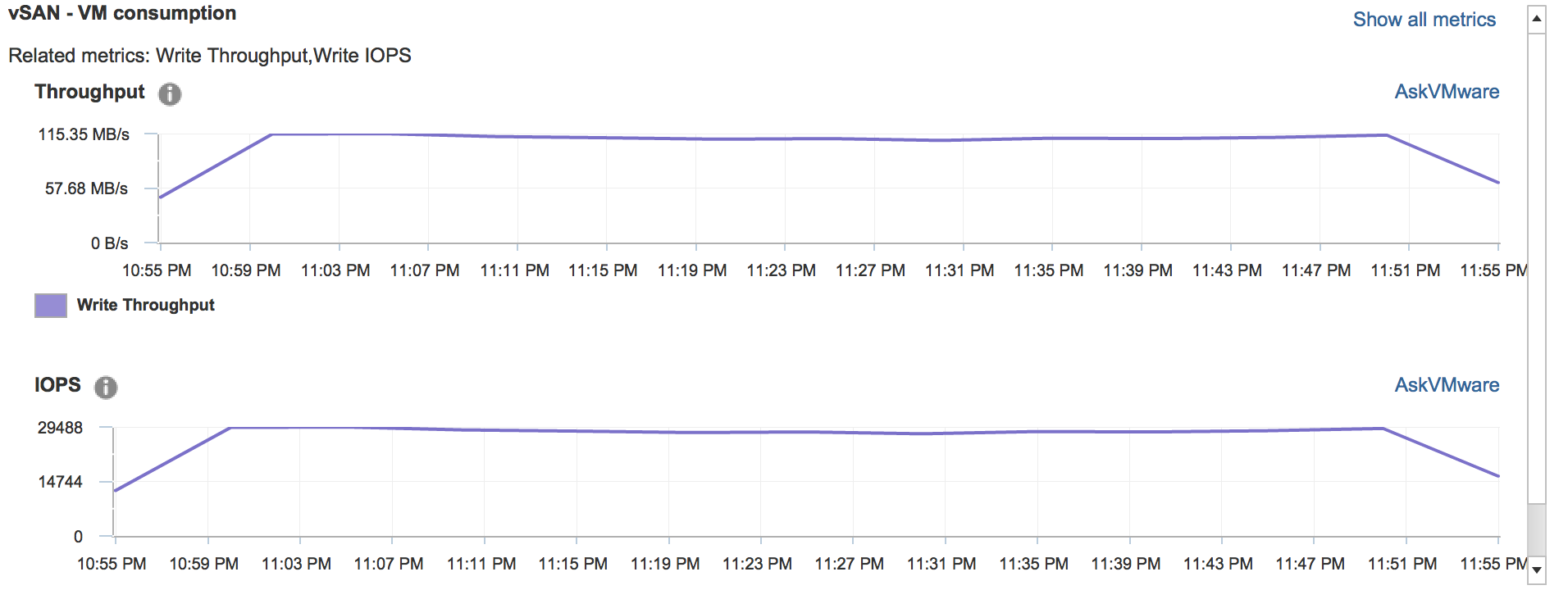vSAN performance diagnostics reports: "The size of IOs may not be optimal to achieve the desired goal"
Article ID: 326899
Updated On:
Products
VMware vSAN
Issue/Introduction
This article explains the vSAN performance diagnostics issue: "The size of IOs may not be optimal to achieve the desired goal", why it might be showing up, and what possible solutions there are to address the issue.
Symptoms:
In the vSAN performance diagnostics, you see this message:
The size of IOs may not be optimal to achieve the desired goal
Environment
VMware vSAN 7.x
VMware vSAN 8.x
Cause
This means that the guest IO size is too low or high for the desired goal. The cluster-wide throughput and IOs per second are reported from which the average IO size is derived. The IO size should be small (ideally 4K) for minimum latency and maximum IOPs. On the other hand, the IO size should be large (ideally 256K) for the goal of maximum throughput. The following screenshot shows the metrics when this issue is displayed.

Resolution
There are three ways to resolve this issue:
- If your goal is to get maximum IOPs, you must choose a small IO size (ideally 4K). With a larger IO size, the system may be bottlenecked on the IO throughput that the vSAN disk group can handle; therefore, a smaller IO size ensures the system delivers the highest IOs per second.
- If your goal is to get the minimum latency, you must choose a small IO size (ideally smaller than 64K). An IO request with IO size larger than 64K is split into multiple IO requests at the vSAN DOM Client layer; hence, there is additional latency in processing multiple requests. In the specific case where dedupe is enabled in an all-flash vSAN cluster, you must choose an IO size of 4K to achieve minimum latency because dedupe operates at the granularity of a 4K IO size.
- If your goal is to get the maximum throughput, you must pick a large IO size (ideally 256K). With a larger IO size, the system may be bottlenecked on the IOs per second that a vSAN disk group can handle; therefore, a larger IO size ensures the system delivers the highest throughput at the expense of IOPS.
Please adjust the IO size according to the desired goal of performance evaluation. Keep in mind that vSAN is optimized for 64K and smaller I/O sizes; configuring an I/O size >64K will result in increased guest I/O latency.
Additional Information
I/O Insight can be used to view I/O performance metrics of virtual machines in a vSAN cluster.
Feedback
Yes
No
